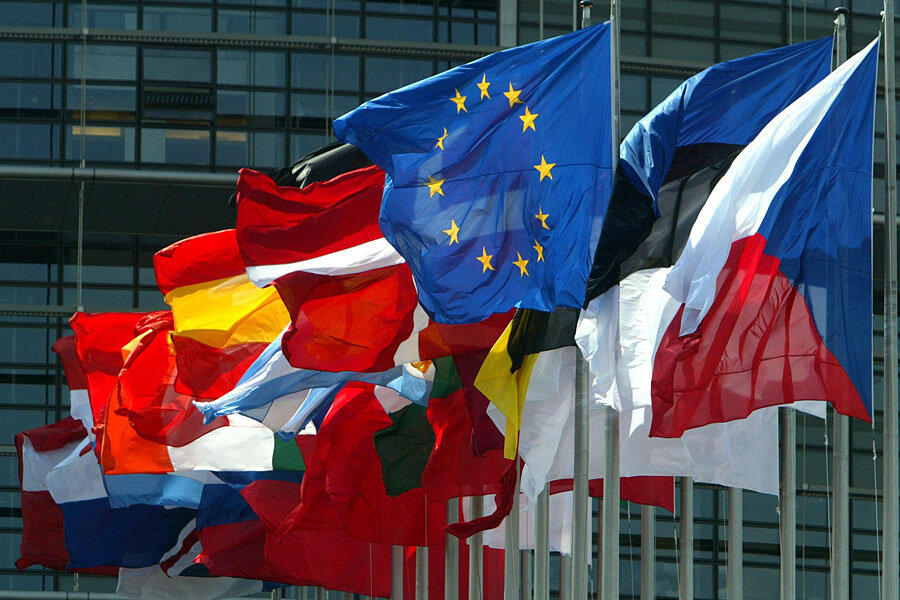Where did Europe get its languages? Scientists uncover new evidence.
Loading...
Beginning some 4,500 years ago, herders living in the temperate grasslands north of the Black and Caspian Seas began moving westward into Europe. The mass migration continued for about 15 centuries, and with it came horses, wheeled vehicles, and a new kind of language.
This, at least, is the hypothesis supported by an analysis of ancient DNA, published Monday in the journal Nature. By examining the entire genomes of 69 Europeans who lived between 8,000 and 3,000 years ago, a team of international researchers has pinpointed the effects of a large-scale movement of people with Near East ancestry into central Europe.Their language, say the researchers, might be the source of some of the Indo-European languages spoken throughout Europe today.
With more than three billion speakers, the Indo-European family, which includes English, Latin and its descendants, Sanskrit and its descendants, the Slavic languages, the Celtic languages, Russian, Greek, Farsi, Kurdish, Pashto, and hundreds of others, is the world's largest family of languages. Almost all of the languages of contemporary Europe, with the notable exceptions of Finnish, Hungarian, Estonian, are part of this family.
But where did Indo-European come from, and how did it wind up in Europe? Most historical linguists fall into one of two camps. Adherents to the Anatolian Hypothesis contend that the family of languages arrived in Europe from Anatolia – the peninsula that makes up what is today the Asian part of Turkey – about 8,500 years ago. Supporters of the Anatolian Hypothesis say that any major language replacements after that time would have likely required major migrations, but that migrations to Europe after the Early Neolithic period could not have made a major impact since the population was thought to already be quite large.
Alternatively, those who support the Steppe Hypothesis believe that the early speakers of Indo-European languages were pastoralists residing in parts of the Eurasian steppe, a region stretching from Ukraine to Mongolia, and that their languages arrived in Europe less than 6,000 years ago, following the diffusion of innovations like the chariot.
Material artifacts are of little help in settling the debate, because no examples of Indo-European languages appear in the historical record earlier than 4,000 years ago. And there are no known artifacts that unambiguously point to a large-scale migration into Europe during the late Neolithic period.
"One of the weaknesses of the steppe [hypothesis] was that people doubted that there were any migrations from the steppe into the rest of Europe," study co-author Iosif Lazaridis told the Monitor.
Dr. Lazaridis and his colleagues set out to better map out the movements of a number of ancient populations across Europe and parts of Asia. Scientists already had evidence indicating that, about 6,000 years ago, farmers who arrived in Europe mixed with hunter-gatherers who had already been living in the region for a few thousand years. And in Russia, a different group of hunter-gatherers is thought to have mixed with a population that was related to those in the Near East and had moved into the steppe. This mixture produced a pastoralist people known as the Yamnaya.
Lazaridis's team was able to determine that, about 4,500 years ago, these groups came into contact thanks to a large-scale migration of people with Yamnaya DNA from Russia into Central Europe. These migrants from the steppe, it turns out, provided nearly 75 percent of the ancestry of central Europeans.
"This is the kind of massive migration that, because of its great size, it's very plausible that it introduced some new languages into Europe," says Lazaridis.
The Steppe Hypothesis has found further support from a team of linguists at the University of California, Berkeley, whose work is set to appear later this month in the journal Language. Borrowing techniques from evolutionary biology, the linguists examined both modern languages and their ancient and medieval ancestors, analyzing the changes as well as the rates of change between the older languages and their descendants. The results showed a root age for these languages in line with the Steppe Hypothesis.
"We deduce how long ago their common ancestor existed, given how different the languages are from each other today," co-author and UC Berkeley graduate student Will Chang told the Monitor in an email.
But in the report co-authored by Lazaridis, the data doesn't provide evidence indicating migration from the steppe necessarily led to the formation of all European languages, or Asian languages spoken in places like present-day India and Iran. The study's authors cautioned in particular that their data is silent on the origins of the Indo-European languages of southeastern Europe.
"In order to solve the problem of the homeland of Proto-Indo-Europeans, we have to solve that there were migrations out of the steppe into Europe, which we did in this study," says Lazaridis. "But we also must show how it is tied to other places."
And the tools are getting better to show those ties: using a new DNA enrichment technique, the team was able to target the human DNA in ancient samples and avoid the unuseful DNA, like that of bacteria. So while genetics may not be considered the ideal branch of science for studying language origins, DNA analysis has its benefits, according to Lazaridis.
"Ancient DNA is a very powerful tool, but it can't really tell you whether a particular people spoke a particular language," says Lazaridis. "But we can advance the question by showing that some migrations did take place and to quantify when they took place."








